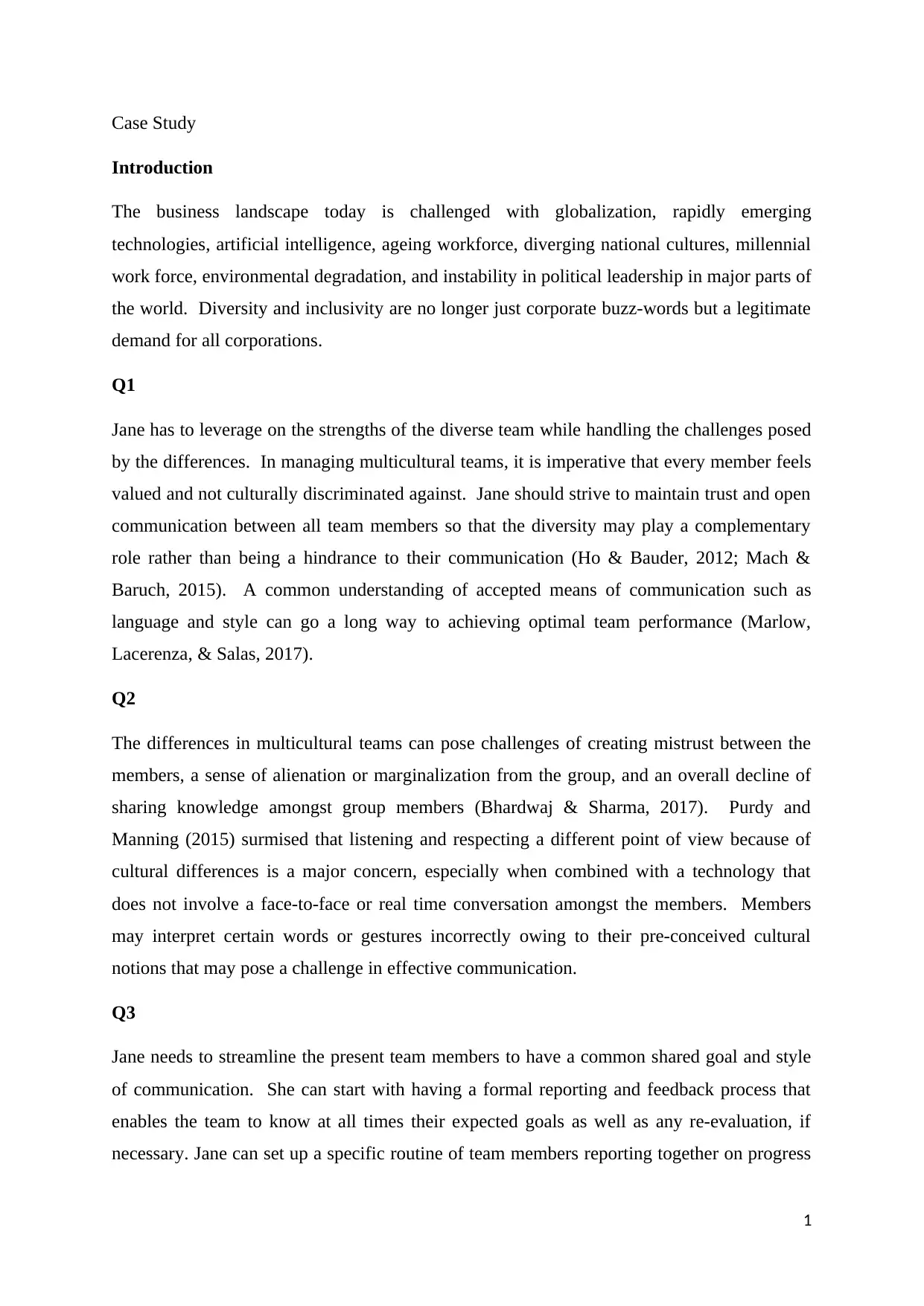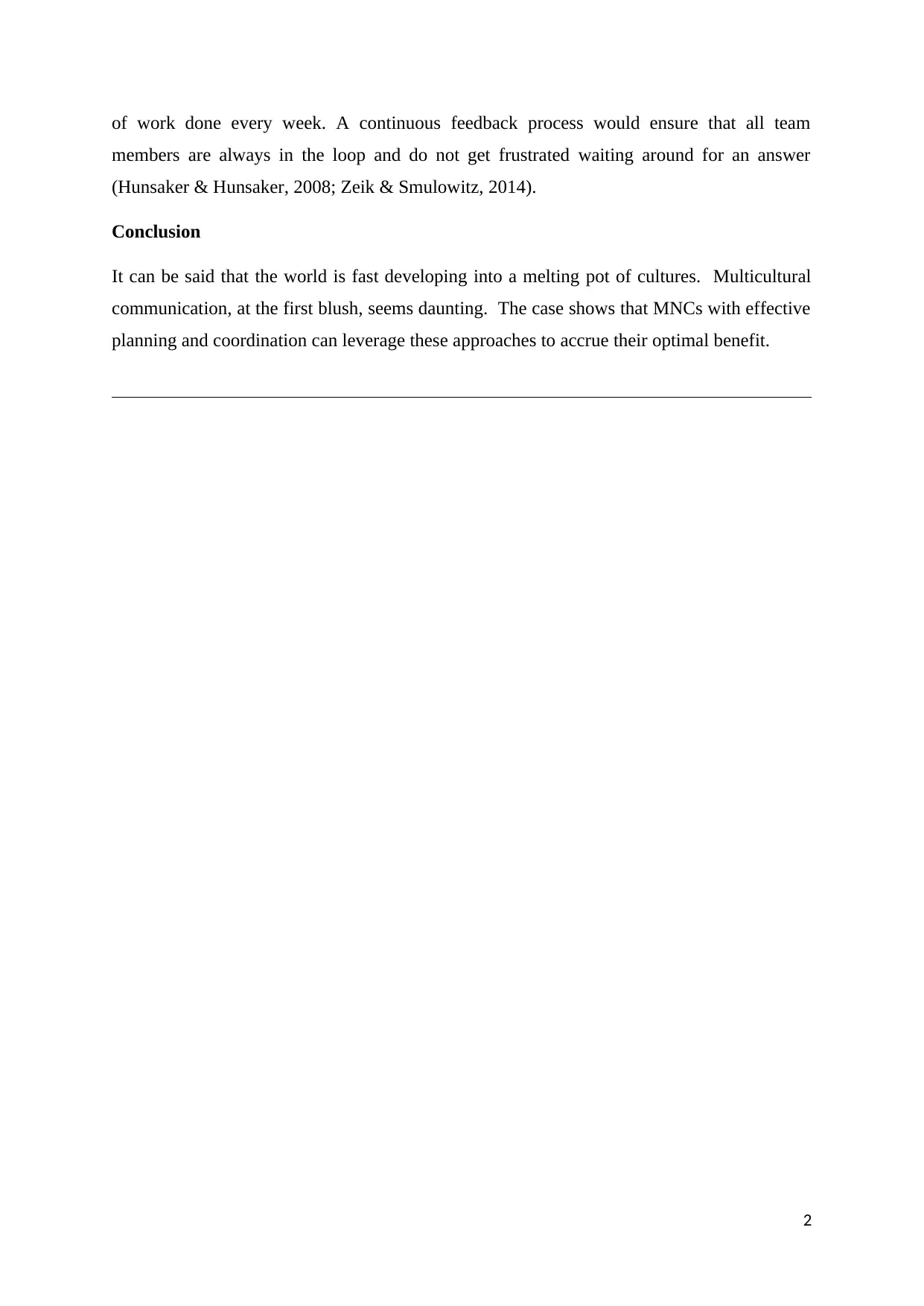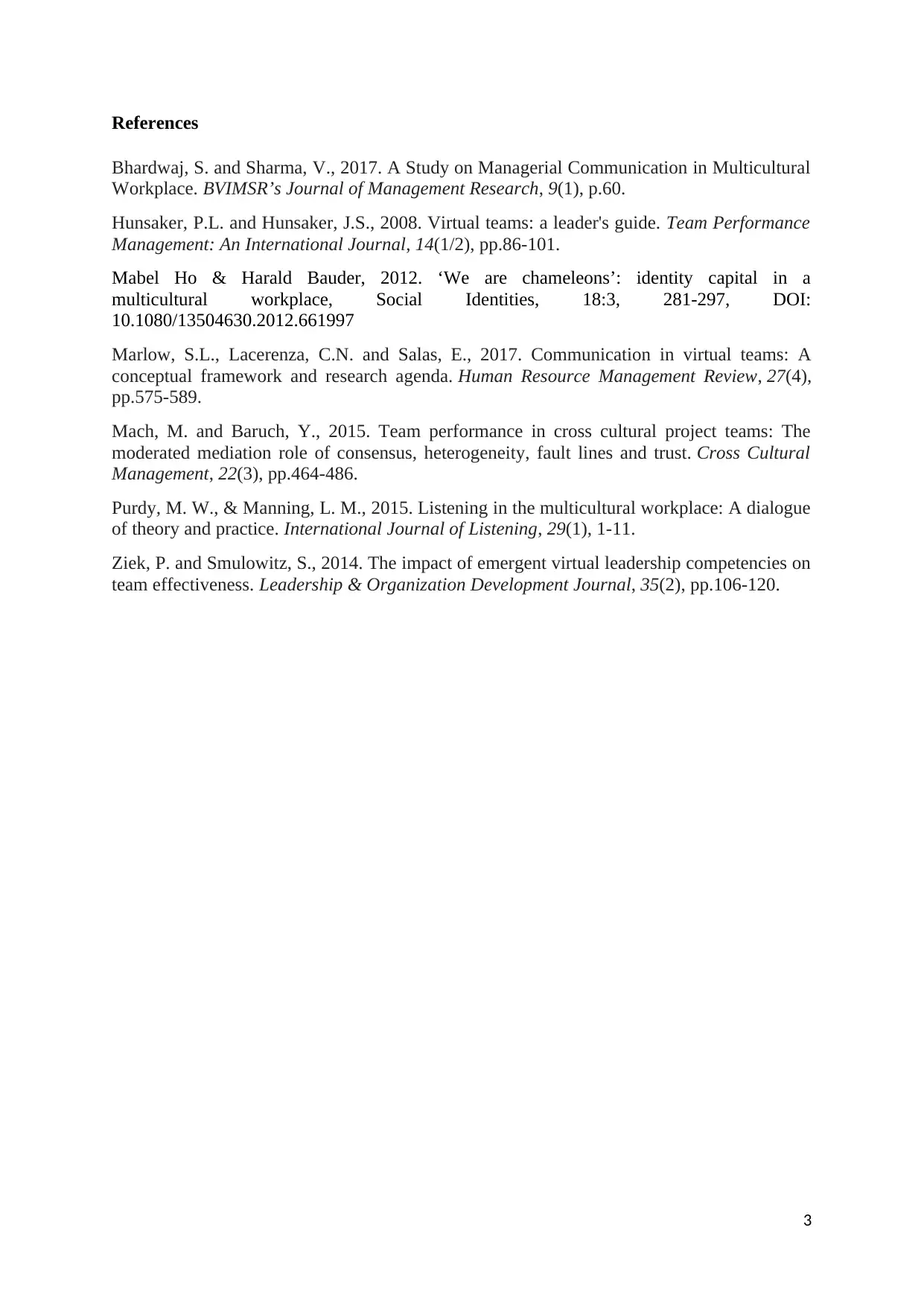Assessment 2: Case Study on Multicultural Team Management Challenges
VerifiedAdded on 2022/09/10
|3
|707
|19
Case Study
AI Summary
This case study examines the challenges and opportunities of managing a multicultural virtual team at Sunshine 100, a global company. The case focuses on Jane Wilson, the newly appointed Marketing Director, who is tasked with leading a diverse team across multiple continents. The assignment explores the difficulties of communication, building trust, and fostering a shared understanding within the team. It addresses issues such as cultural differences, potential for misinterpretations, and the need for streamlined communication processes. The solution suggests strategies like establishing clear reporting structures, feedback mechanisms, and shared goals to enhance team performance and leverage the strengths of a diverse workforce. The case highlights the importance of effective planning, coordination, and communication in multicultural environments. The references cited provide additional support for the concepts and recommendations presented in the case study.
1 out of 3





![[object Object]](/_next/static/media/star-bottom.7253800d.svg)